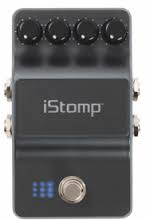
I’ve arrived at SPAH
SPAH members tend to break down into the people who were inspired by blues in the 1960s and 1970s, and the people who were inspired by harmonica trios and vaudeville acts in the 1940s and 1950s. The former group plays diatonic harmonicas mainly, and the latter group plays chromatics, basses, and chord harps. It’s not hard to tell who’s who when you walk around the hotel.
I said in a previous blog post that there are some great players here, and a lot of players who aren’t so amazing. There are a lot of differences between the two groups, but one that hits you right away is that the great players have a completely different sound. Harmonica in their hands has a big, striking sound that conveys a lot of power and emotion. The lesser players may play the notes, but their sound just isn’t very compelling–it’s thin, reedy, warbly in an uncool way.
I’m doing a seminar here on using electronic effects with harmonica. It’s a truism that it’s the sound of the player, not the instrument (or the effects) that matters most, but I’m going to need to talk about both to help this crowd walk away sounding better than they did before.
Related Posts
Leave a Reply
You must be logged in to post a comment.
WHAT’S NEW
Categories
- Audio/Video
- Blog
- Blue Future
- Digitech RP Tricks and Tips
- Discography, CDs, Projects, Info, Notes
- Featured Video
- For the Beginner
- Gallery
- Hunter's Effects
- Hunter's Music
- Huntersounds for Fender Mustang
- Meet the Pros
- More Video
- MPH: Maw/Preston/Hunter
- My Three Big Contributions
- Player's Resources
- Pro Tips & Techniques
- Recommended Artists & Recordings
- Recommended Gear
- Recorded Performances
- Reviews, Interviews, Testimonials
- The Lucky One
- Uncategorized
- Upcoming Performances
- Zoom G3 Tips and Tricks
